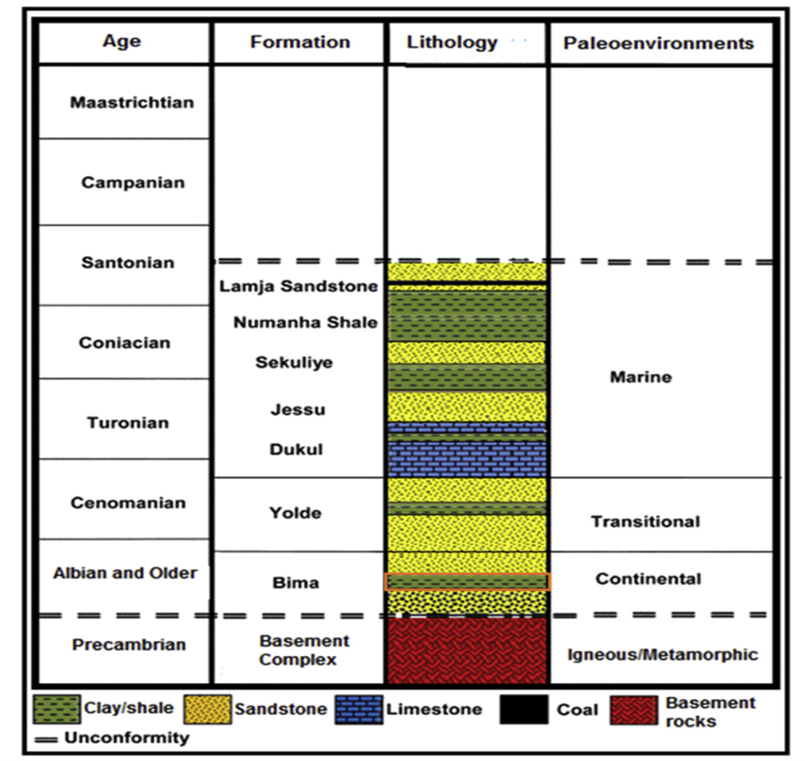Palynology, Palynofacies and Foraminiferal Analyses of Lower Bima Member, Yola Sub-Basin, Northern Benue Trough, Nigeria: Implication for Age, Paleoenvironment and Thermal Maturity
Keywords:
Yola Arm, Upper Benue Trough, Lower Bima Member, Palynology, Palynofacies, Foraminifera, Cenomanian, Paleoenvironment, Hydrocarbon PotentialAbstract
The Lower Bima Member of the Yola Arm Northern Benue Trough, northeastern Nigeria exposed at Ture-Awak Section, was investigated through integrated lithostratigraphic, palynological, palynofacies, and foraminiferal analyses to establish its age, depositional environment, and thermal maturity. A ~45 m thick succession of sandstones, siltstones, mudstones, and shales at the Ture–Awak Road section was logged and interpreted as a prograding fluvial to lacustrine system with repeated fining- and coarsening-upward cycles. Palynological analysis of 21 outcrop samples (M1–M21) yielded a moderately diverse assemblage dominated by terrestrial pollen and spores, with additional occurrences of freshwater algae (Botryococcus braunii), fungal spores, and diatom frustules. The presence of diagnostic taxa, including Cretacaeiporites, Monocolpites marginatus, Araucariacites, Proxaperites operculatus, and Triorites africaensis, supports a Cenomanian age. Palynofacies assemblages are dominated by woody phytoclasts (PM-1, PM-4) with minor amorphous organic matter and algal remains, indicating predominantly gas-prone Type III kerogen with localized oil-prone intervals, while Thermal Alteration Index and spore colour index values suggest variable maturity from immature to peak oil window. Foraminiferal analysis reveals arenaceous benthic taxa (Haplophragmoides, Trochammina, Ammobaculites), which indicate marginal to restricted depositional conditions, and Foraminiferal Colour Index values (~2.0–3.5) correspond to paleotemperatures of 60–110 °C, consistent with early to peak oil generation. Therefore, palynological, palynofacies, and foraminiferal studies demonstrates that the samples were deposited in under humid/arid climate in fluvial–lacustrine depositional systems. The presence of source-prone shales and maturity parameters confirms that the samples are matured enough for hydrocarbon generation.

Published
How to Cite
Issue
Section
Copyright (c) 2025 Journal of Science Research and Reviews

This work is licensed under a Creative Commons Attribution-NonCommercial 4.0 International License.
- Attribution — You must give appropriate credit, provide a link to the license, and indicate if changes were made. You may do so in any reasonable manner, but not in any way that suggests the licensor endorses you or your use.
- NonCommercial — You may not use the material for commercial purposes.
- No additional restrictions — You may not apply legal terms or technological measures that legally restrict others from doing anything the license permits.




